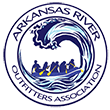How Rafting Can Create Lasting Family Memories
If you are looking for the best Family Rafting Trips Colorado has to offer, then look no further. At Wilderness Aware, we know what it takes to excite and have fun, after all we are lucky enough to do it every day. Be sure to check and see what trip offerings are available and contact us to plan a trip that your family is sure to remember! Creating Lasting Family Memories… With a Little Help From Nature Most people will know it is very difficult to conjure, plan, and put into action a proper family vacation because people want different things from a vacation. Some want to relax, others want to explore, others want to simply get away, while still some are seeking a thrilling experience. This list can go on and on, but in the end, the point that no two people are the same still exists. Meaning that very few things can fulfill everyone’s wants and desires. Now when you take into account that this rarely occurs where everyone gets what they want, people can become sour and unpleasant because, well… they aren’t enjoying themselves. This only lessens everyone else’s experience. So for a great family vacation, consider a whitewater rafting trip! By no means take this as a sales speech and consider what is going to be said here as if it wasn’t enjoyable, no one would be doing it. Rafting Is Both Relaxing and Thrilling It may seem to be polar opposites, but rafting is indeed both relaxing and thrilling. Simply stated, there are moments of both throughout any trip. There are going to be stretches where your only concern is the sound of the water trickling and babbling, viewing landscape scenes most others will never set eyes on, basking in the warmth and glow of the sun, watching the birds fly and chipmunks play. There are few occasions and instances in life where you could be more relaxed. And though this won’t be the rafting trip entirely, there are certainly enough moments where even the most tumultuous souls will be put at peace. Now on the other end of this spectrum, is the excitement. The thrill of shooting through rapids, crashing and fighting against the waves. The battle of controlling what would otherwise be an uncontrollable object, guiding it through obstacles like a thread through a needle. At some points, you may feel you’ve been going for an eternity when in actuality it’s only been a few moments. Your heart will be pumping, your senses heightened due to the adrenaline, and muscles tired from fighting the current. Fortunately, just around the bend is another section of lazy river. So rafting certainly covers the full spectrum of relaxation and excitement. Rafting Is Adventurous There is nothing more adventurous than being beholden to the current of a force outside of yourself. You may be able to guide where in the river you are, but the river in the end is leading the way. Along the way, if you saw something of interest, get out and go explore. Most people will never set foot in these places, they will never see what is seen, or experience what is experienced. Rafting is naturally and inherently adventurous, absolutely no doubt about that. Rafting Involves The Outdoors This should go without saying, but for some a proper vacation involves the outdoors and even being active. While in the river, you are literally following and flowing through the veins of the world. You will be smack dab in the middle of the outdoors, there is no doubt about that. Meantime, as far as being active is concerned… there is no concern. At the end of a day you are going to be spent, as you will have been outdoors in the sun, breathing fresh air, and fighting a formidable force. Rafting As A Great Escape There is no better way to escape than getting out into the wild. If losing yourself for a moment is the goal, rest assured that while rafting you will forget all about yourself. The unadulterated beauty of nature and the serene sense while present in it is without any better way to say, magical. For a long time man has though there to be healing properties to rivers, sometimes physically, but certainly mentally and spiritually. Rafting Creates Great Memories With all that said above, it should be apparent now that it would be hard for any person not to find some enjoyment from white water rafting. Whether you remember how relaxing, thrilling, beautiful, or adventurous your trip was, you’ll have stories and memories to share for a long time. As far as allowing a family to do something together where everyone has something they can enjoy, there are few things that beat rafting. Most likely your favorite memories won’t be the same, but that’s a good thing. That means you’ve each taken something different and special from the experience, but what would be important was that you’ve experienced it together. And it is these moments as a family that matters most, when everyone is happy and enjoying each others company without the stresses of normal daily life. We hope to see you soon someday, and to help make any of your Family Rafting Trips memorable. Be sure to contact us with any questions, and be sure to consider rafting as a great family trip. You can rest assured, it would certainly be more interesting than a trip to Disneyland!
10 Reasons To Love Whitewater Rafting
If you have a hankering for adventure, you may very well enjoy rafting Colorado and the beautiful rivers that exist here. If you feel that may interest you, be sure to check out the available rafting trips at InARaft.com! 10 Reasons To Love Whitewater Rafting Exercise Exercise is generally something most people don’t get enough of, and what better way to exercise than by having fun doing it. When whitewater rafting, there are certainly moments when you are paddling hard to ensure your raft takes the right path down a section of river, or when you need to avoid some obstacle. Not to mention the entire time you are in the raft you are continually keeping yourself balanced and centered. These are a few of the reasons why at the end of a long day rafting, you are generally physically spent. The Outdoors Along with exercise, getting outside is something most people aren’t able to do often enough. But for the most part, is thoroughly enjoyed by all. The spray and mist of the river water cooling you down as you sit under a shining sun, the feeling of a breeze licking your skin, drying you off. The smell of the wild teasing your nostrils… all of this is what makes the outdoors literally set a persons soul at ease. There are very few things that can compare to it. Adrenaline Come to think of it, this entire list is made up of things most people don’t get enough of. Adrenaline pumping action certainly not being excluded. The thrill of crashing through waves, being bucked in the air, and going toe to toe against the elements causes your adrenaline to flow and for you to truly feel alive. As we know, motion is life itself, while stagnation is death. So keep moving! Time With Loved Ones It’s hard enough in our day and age to find quality time to spend with loved ones… but that’s not really an issue when you’re all packed onto a raft hucking rubber. These moments are also ones not easily forgotten, and nor should they be. You’ll remember these trips, and others like it, for the remainder of your life. Unique Experience There is much in this life to experience, and there is much in this life you should experience. You only live once and you have to make the most of that limited time. If whitewater rafting was not worth the time spent doing it, you would not have as large of a following as you do for the sport. It’s thrilling, enjoyable, memorable, and entirely worth every second spent doing it. Wildlife The number and variety of wildlife that can be viewed while sitting on a raft in the river would take anyone by surprise that has never experienced it. If you can imagine, the birds soaring over head, the marmots scurrying around on the banks and shore, the chipmunks monkeying around in the trees, and every other form of life found in the water can all be viewed while sitting on a rubber raft floating down the river. Vegetation For those of you with a love for plants, there are fewer better areas to view the vegetation of a region than by the banks of a river. As you can expect, any plant would love to find some prime real estate river side. As such, you can always view a wide diversity of plant life while cruising down a river. This is of course, in between the moments of excitement and pure wonderment over the beauty of the landscape. Sexy Guides There are always additional benefits to doing anything enjoyable,and for those taking guided rafting tours, the guides themselves are sometimes it. The men and women that have the intimate knowledge of the surrounding area and the physique of the gods themselves from endlessly and tirelessly rowing many times make these trips better. It may be a silly thing to say, and even sillier to hear. But when it comes down to it, it’s true. And more times than not, you will have heard a friend go off about how “cute” or “hot” or “stunning” their rafting guide was. This is most certainly an additional benefit. Learning Facts Many people, rather than having a love for beautiful people, or animals, or plants, or scenes, have a love for knowledge. And when it comes to knowing their surroundings, and all that it encompasses, rafting guides are often experts. They know local legends and tales, they know the behavior of the animals, they know almost everything that is to be known of the area in which they guide. This makes it especially easy to learn a lot about certain areas that you would otherwise never think of considering. Enjoyment Beyond all these other factors, whitewater rafting is simply enjoyable, in every sense of that word. Rarely will a moment pass where you are not enjoying yourself, which is the reason many people take yearly rafting trips. It fulfills so many desires and experiences we wish to have that there is no reason not to. If you are looking for a way to enjoy yourself, thoroughly, please, for your own sake, plan a trip and hit the river. It is certainly something you will not soon forget. If after reading through this you finally realize that yes, you would indeed love to go enjoy a rafting trip, and Whitewater Rafting in Colorado would scratch that itch, give us a call or get in touch with us via email. We love rafting, and enjoy sharing that passion with anyone who cares to join!
The Arkansas River National Monument
Senator Mark Udall Pushes For Browns Canyon Protection Democratic Senator Mark Udall is pushing for protection over Brown Canyon. His intentions are to create a national monument coined the Arkansas River National Monument. This would cover over 20,000 acres of BLM and National Forest lands and designate them as wilderness. Recently, President Obama made Chimney Rock a monument after efforts by Scott Tipton and Michael Bennter failed first. Though, this was the presidents latest attempt to try and help create more wilderness areas throughout the U.S. Over recent years, proposed wilderness designated areas have slowed down due to congress and self-interset groups, such as the National Rifle Association, stalling any efforts. As a result, in the current political climate, the only way for certain areas to receive wilderness level protection is through presidential designations. This obviously limits the number of areas that are not only focused on, but actually accepted. The Arkansas River National Monument is being proposed because rafting the Arkansas River has become one of the most enjoyed river activity in the world. Thus the number of people that flood to the the area to view the river, as well as the surrounding landscape, has swelled dramatically over recent years. A terrifying statistic for nature lovers and preservers alike is that the current Congress is on path to be the first Congress since 1966 to not protect a single acre of wilderness. The argument is that it is believed there have already been enough designated wilderness areas already. But there is one specific issue with prior areas deemed wilderness spots, and that is those spots are scenic and iconic areas, where the beauty of the landscape is awe inspiring. Enough that even those that hate the outdoors cannot help but marvel and wonder at the scenes these areas have. This leaves less beautiful areas forgotten, and unless there is some snow capped mountain, or flowing waterfall, people do not deem them “wilderness”. It’s a hard thought to consider how someone can view anything outside of a city or town not to be wilderness. As though everything but these areas are “tamed” or less wild. If you live in Colorado, there are more wilderness areas than developed, and by a large margin. However, the law happens to state otherwise. But for any area to be deemed “wilderness”, there are special considerations that come into play on behalf of law makers. So hopefully these same law makers will see that the Browns Canyon is indeed a special area, and one that is deserved to have a monument commemorate it. It will also help Colorado River Rafting down the Arkansas River become more popular since rafting companies can now say you will pass through “wilderness” areas. There is no doubt that Rafting in Colorado would not be what it is without the Arkansas River. Making the area a wilderness will also do a lot to help protect the Colorado Arkansas River. Water is and will always be a major topic in Colorado, as there are those that need it for pleasure and others that need it for necessity. Meanwhile, there are countless people outside of the state that rely on the water the flows here. There are also those that would like to develop in some areas, while others would like to mine. Either way, highlighting one area of Colorado at least helps to keep a watchful gaze on our state, both from the media as well as the citizens themselves. So it’s unknown what the future will hold, but we can only hope that it will be the designation of more wilderness areas throughout our country. As it is the wild that keeps America what it is, and I think that’s how people like it. If you are interested in a Colorado River Rafting Trip, or a Family Rafting trip in Colorado, you should be sure to contact Wilderness Aware Rafting, where our experienced guides can plan out the perfect get away or adventure for you. There are single day trips as well as Multi Day Rafting Trips. So depending on how deep you would like to get into the wilderness, there is no doubt we can help you in that endeavor. Update: The proposed area mentioned above is now known, as of 2015, as Browns Canyon National Monument.
How The Arizona Salt River Became Salty
The Thirsty Tree – The Tamarisk Salt Cedar There are only so few places in the world where one can go salt river rafting as it’s not exactly a common occurrence to find salty rivers.White water rafting AZ is an extremely thrilling and enjoyable experience, one that countless people enjoy every year whether that is by swimming, tubing, kayaking, or doing some Salt River white water rafting. Though, with as many people that enjoy the Arizona Salt River, very few actually understand why the fresh water of the Gila River, which turns into the Salt River Tributary, becomes salty to begin with once it leaves the White Mountains. The interesting thing is there is a little known reason as to why, which is even less common throughout the rivers of the world. The Thirsty Tree The Salt Cedar, also known as the Tamarisk, is a plant that lines the Salt River. They were introduced as a means save top soil from blowing away off of farms, to help keep banks from eroding into the river, and interestingly as a means to slow down evaporation of the river itself. They also replaced the areas where old forests of cottonwoods and willows once prospered. The Salt Cedar originates in dry climates throughout the Middle East, Asia, and parts of Africa. When they were introduced, there were no apparent negative side results whatsoever and the plant itself did very well in its new climate. What Makes The Salt Cedars Salty The Tamarisk has an incredible ability to draw the salt from the earth through a series of complex web of roots. The salt is then stored in the leaves of the tree. As wind blows and rain falls, the salt is knocked off the tree and into the water, thus making it salty. A Mistake From Long Ago Miners and farmers believed it was a genius idea; bring in a tree that requires little water, preserves the top soil and river banks, shields crops and homes from wind, and covers the river which will help to prevent evaporation of the river. What they found decades later was that the Salt Cedar had taken over and spread like wild fire. Little natural vegetation remained where the Tamarisk took hold and they wondered how much water was being lost to the stomata of the Salt Cedars. So they quickly made attempts to remove the Salt Cedar from river shores all across the southwest. But they found the tree were much more difficult removing than they were introducing. Its seeds would linger in the soil until rain fell, and trees would sprout up in their fallen brethren’s place. It was this cycle that continued for years until scientists found something out. Mistaking A Mistake For A Mistake What scientists found out in the mid 80s was that the tamarisk had not killed off the other vegetation, but the natural plants had died off due to their own inability to survive any longer. Areas where local vegetation persisted saw fewer Salt Cedars, which was because the Tamarisk could not naturally compete. They relied upon the local vegetation dying off for their own survival. They did in fact save the top soil and keep the river banks from eroding as there was little other vegetation helping in that fashion. They also found that the tree likely helped prevent the river water from evaporating more than the amount they took in for their own hydration. So in the end, Rafting AZ would not be the same without it’s unique salt river. The river would not have nearly as much salt in it if it wasn’t for the Tamarisk. So we should be thanking this foreign tree for helping to form a landscape and creating our unique river which would not be the same without it. AZ rafting adventures and salt river rafting trips can all be made through Wilderness Aware Rafting.
Reading Rapid Features Whilst Rafting
If you were hoping to do some white water rafting in Colorado with the remaining days left in the summer, it is of course important to have an understanding of any river prior to making an attempt at white river rafting. It is also important to pull off and scout ahead before an expected decent into a series of rapids occur. These two precautions alone can work wonders, keep you dry and out of the water, and ensure that you remain safe. But there is one skill that can be learned through experience only, and that is the reading of river rapid features. This skills will certainly help when scouting ahead, but if rafting were chess, scouting would be considered the strategy, where you design a plan ahead of time and act with that in mind. Once you are in the river, if anything unexpected occurs, having to avoid it would be considered a tactic. Which is an in the moment plan of action. A proper ability to read rapid features as you’re rafting is an important skill which can keep you safe, dry and happy. So without further ado, let us describe some of the more basic features that can be noted upon a whitewater rafting trip. Visible Rocks: If you intend on doing some Colorado rafting, you better assume there are going to be some rocks in the river. Most experienced rafters understand that rocks generally do not pose a large or significant threat. They are more than often easily spotted and avoided. Generally, if they are hit, there is little to no damage to the raft. There are really only two things that you should have to worry about if collision occurs. One is if you become beached atop the rock or against it. This is a problem as removing a heavy raft from atop a rock amidst a raging river is no easy task. The other is if by hitting the rock you are spun about, and unable to head nose forward down the river. You dont want to enter a series of rapids heading either rear first, or especially sideways. The latter is a sure way to flip your raft over. One important clue that a rock can give is indicate the direction a current is heading. This can be noticed by seeing which way the water is deflecting off of the rock. This is important especially when heading through narrow areas, as you’ll want to use the current to avoid certain obstacles and hazards. Chutes: Chutes are the parts of a river where the water is smooth and flowing through a channel and is recognized by a V-shaped ripple that points downstream. This indicates a good and safe course and should be taken when noticed. If you notice a V-shaped ripple pointing upstream towards you, this is not a chute, rather it is a rock or obstacle under the water and should avoided. It is important to try and notice the direction a V-shaped ripple is heading as that can save your raft from a potential disaster. Eddies: Eddies are an interesting feature in any river, which results from the water seething to fill the void left behind by a rock or other obstacle. Depending on the size, eddies are often very calm and the water can even appear to be standing still. These provide great resting spots, especially for a rest or to scout the next rapid ahead. Holes: Holes are perhaps the most dangerous of all river features, they are often also referred to as ledge holes, souse holes, waves, stoppers, reversals, keepers, and pour-overs. Submerged and other large objects that are submerged can be recognized by either the smooth dome of water that is created cascading over the op, or the turbulent water created by deeper and larger rocks downstream. The waves or turbulence created are called hydraulics. There are many different types of hydraulics created which depend upon the rivers gradient, amount of water, and the dimensions of the rock The dangerous parts to holes are the back-waves that are created. Back-waves are created by the water traveling back in on itself in these holes. In larger holes, or ledges in some cases, the back-wave can be very powerful and difficult to escape. These can be very difficult to escape, and should be avoided when possible. What end up happening is you will become stuck in a single spot where the water is churning and attempting to essentially swallow the raft. Holes are very easy to flip your raft it, which is why caution is advised. Hazards: Any obstacle in the water should be considered hazardous and avoided if at all possible. No matter what the obstruction is, there is no need to risk the life of the raft, in case of a tear, or the potential life of a passenger in case they fell out and became entangled. You would be surprised at how slow a little bit of water needs to travel to trap you against an object. It’s not much, and once you’re pinned, theres very little that can be done to loosen yourself. Even overhanging hazards, which normally wouldn’t present a problem can be dangerous. Tree branches are notorious for knocking people into the water, knocking sunglasses off, and jabbing at people. The most dangerous part is perhaps the potential for a branch to scratch or stab a person in the eye. They also just generally hurt to go through, and it’s hard to escape unscathed without at least a few cuts and scrapes. If you are interested in perhaps doing some salt river rafting down the great Arkansas River, or perhaps go whitewater rafting in Colorado, than please visit Wilderness Aware Rafting to see what trips are still available this season.
The International River Grading System: How To Know A Rivers Rating
Colorado river rafting can be hazardous at times and should not be taken lightly. But it can also be as harmless as a whimsical lazy river. It all depends on the ranking of the river, and more importantly, the ranking of certain rapids. Rafting the Royal Gorge for example, can have very mellow sections when little attention has to be paid. But around a corner there can be an explosive series of rapids where only the most skilled guides should be making an attempt at it. Just as a snowflake, no two rivers are the same. Each is unique and has it’s own individual dynamic, which makes it like no other on earth. These rivers even change over time, so no river is the same as it has been, it gradually changes year after year. This means that every new attempt at a river should require new scouting to ensure it’s known which obstacles to avoid and which routes to take. The actual act of rafting is only part of the fun, figuring out a course and navigating is enjoyable in it’s own right. Especially when you make the right calls and decisions safely guiding your raft down the rapids. The first thing that should be done prior to actually rafting, is seeing what previous rafters have said about the river. We wouldn’t have the majority of the things we have in this world if we couldn’t build off the success of others before us. With that said, a system has been developed which allows rafters to let other rafters know what they think about certain rivers. This system is known as The International River Grading System. The International River Grading System Grade I: Easy Rivers that are flat with slow moving water and the occasional small or simple rapid. Any waves present are low, with obstacles being obvious and easy to maneuver around. There is no technical training required to raft these rivers. Grade II: Novice Rivers that frequently have rapids which are moderately sized with small and simple waves and eddies. Scouting is unnecessary as the river will be moving slow enough to avoid any obstacles that arise. Little training is required, mainly just understanding how to maneuver a raft. Grade III: Intermediate For a rafter with some training and proficiency, these rivers are easily navigated. There will be a few routes that must be run correctly to avoid major obstacles and obstructions. There will be a number of rapids that have abnormal and irregular waves. There may even be a series of steps with a steep gradient that must be done. For the less experienced rafters, viewing a route from the saftey of the bank is advised. Grade IV: Advanced These rivers are considered to be very challenging, with long stretches of rapids with irregular waves. The courses to take on these rivers will complicated and various obstacles and obstructions may be hidden and unseen underneath the waves. These rivers will also have waterfalls ranging up to 3 meters in height. There can be narrow and steep channels that are difficult to navigate. Regardless of the experience of the rafter, you will want to scout ahead to mark your path. These rivers require a group to be skilled enough to make a rescue if need be. Grade V: Expert These rivers have all the same issues as grade IV does, however it is going to be more extreme. Meaning the waves are larger, drops steeper, and rapids more violent and less predictable. The routes to take for these are extremely difficult to manage, even when the exact course is known. There is a greater amount of risk involved in rafting these rivers. Grade VI: Unraftable Some consider rafting on a class VI river suicidal, and only extreme luck or skill will allow you through) Hopefully this guide has helped to explain the differences in river difficulties. Always be sure before you raft on a whitewater river that you understand what you are getting into. Before taking on stretches of river, always scout ahead to make sure you know what course to take. Even if you’ve done the river countless times before, new obstacles could have been created which weren’t there the time before. If you would care to perhaps do some Colorado rafting yourself, you should contact the people at Wilderness Aware Rafting to see what trip options are available this season.
How To Choose A Proper Rafting Company
There are many factors that should be considered when choosing a company to take you on a white water raft trip. The choice made can either turn your trip into an amazing memory, or an unforgettable nightmare. So it’s important to choose wisely from the start. What follows is an explanation of the areas that should be touched upon when seeking out a whitewater rafting company. One thing for certain is that people expect to have an enjoyable time and remain safe while on a rafting vacation. So choosing the best river that matches a groups or persons capabilities is paramount. The fun will be had so long as the challenge is there, and the fun can be enjoyed so long as there is no looming feeling of fear. Fear comes about from uncertainty, so in order to enjoy yourself, you are going to need to be able to trust your rafting guides. In order for trust to be achieved, you are going to need to clarify a few things with the rafting company. Trip Safety You are going to want to choose a rafting company that does their best to create the safest conditions for rafters. Meaning that the proper equipment is provided for such as helmets and life vests, and instructions are given for newcomers/beginners about rafting etiquette and what to do if they are ejected into the water. What has to be remembered is that while rafting, you are not in a controlled environment. But many of the dangers can be mitigated if attention is paid. A proper rafting company knows these dangers as well as the best course of action to lesson the chance for a problem to occur. Equipment Provided All rafting companies will offer life vests, as thats the most basic of safety equipment to be provided. But you should ask to see what other options for safety are available. The next most important that should be considered is a helmet. These are the two most critical items to have whilst rafting. After that, neoprene clothing items are optional to fight against the cold. Even gloves may be provided to protect you hands and provide extra grip. Does the Rafting Company Help to Determine the Most Suitable River Safety is not only dictated by the protective items worn, but is also determined by the river chosen for rafting, and the experience of the rafters themselves. You will want to discuss the experience of all the rafters in a group participating, and see what the rafting guides believe is the most suitable level of rapid that should be attempted safely. This is an important point, and should not be over looked or forgotten. Chances are though that a proper rafting company will not allow this point to be untouched. The Experience of the Guides as Well as the Company Itself You will want to inquire to see how long a rafting company has been in business and weigh that information accordingly. Especially depending on the rivers they raft. A company may be well versed with Colorado white water rafting, but may be new to rafting Arizona. Meaning that perhaps they wouldn’t be the most trusted if they’ve just began to raft a certain river. Experience, after all, does count for certain rivers. Beyond a companies experience on certain rivers, you will want to find out the overall experience of the rafting guides themselves, as well as their experience on specific rivers. The Total River Options Available If a rafting company only offers a handfull of possible rivers to raft down, they will be trying to get anyone they can to raft those certain rivers. Which could be either below, or worst, above a groups skill level. Either way, you want to see how many options are available for certain rivers, as more choices are better than fewer. Number of Activities Being Offered At times, you may want to do other things beside raft. This could include anything outdoor related, such as horseback riding, mountain biking, off-roading, or simply hiking around. These activities are not always allowed or offered for certain companies, so if it’s something you are interested in, you will want to check ahead of time to see what options are available. Company Awards, Prestige, or Recognitions Received You will want to see if a rafting company has received any awards or recognitions in the past. This should only hold a certain amount of weight in deciding a company, but it certainly helps to highlight the shining stars from those that dont. Recommendations and Customer Testimonials Nothing can bring about trust for anything more than a friendly referral. If a family member of friend says that a certain company is trustworthy, than that’s really the most important but of information that can be obtained. If you do not know anyone that has been on a rafting trip, then you will have to read through company customer testimonials to see what they have said. These are generally worthwhile to read through, but be careful. Often times companies add in “fake” testimonials to bolster their reviews. It can be hard to sort through the fakes at times. But if a statement seems genuine, than chances are it really is.
6 Great Rivers That Wilderness Aware Rafting Offer Trips On
Wilderness Aware Rafting is one of the more well known rafting companies in Colorado. That said, the rivers we choose to raft reflect our love for water, and we only offer trips on the best rivers available for commercial rafting. So here is a list of the 6 greatest rivers that we offer as rafting destinations in and around Colorado. 1. The Gunnison River, CO: The Gunnison River is located next to the Black Canyon of the Gunnison National Park. Surrounding towns include Delta, Grand Junction and Montrose. It is an isolated and gorgeous river, home to both narrow and tall cliffs that are near black in color. Gunnison Whitewater rafting is a special thing, cruising through canyons where the rock is as dark as the shadows they cast. It’s quite easy to become lost in the moment whilst rafting here, where your mind can wander as far as the river snakes. 2. The Dolores River, CO: The Dolores River is located deep in the desert of Colorado’s southwestern region. Surrounding towns include Durango, Cortez, and Telluride. Rafting the Dolores River offers rapid difficulties ranging from novice to advanced, which allows for any range of experienced rafters to partake in the joy of this desert beauty. The river is long enough that multi-day trips are available, where you can enjoy the sounds of the whispering river before you doze off under a clear night sky. The peace that is brought to you here is unquestionable, and once experienced, you’d understand why. 3. The Arkansas River, CO: The Arkansas River is found running through the heart of Colorado. Surrounding towns include Buena Vista, Salida, and Canon City. It is believed to be on of America’s most popular white water rafting locations. Arkansas river white water rafting is suitable for any experience of rafter. The rapids to be found there range from mild to extreme difficulty. Wilderness Aware Rafting even has designated picnic sites to stop at, which are in the most scenic of areas. 4. The Upper Colorado River, CO: The Colorado River begins high in the Rocky Mountain National Park. From there it flows and grows into a gentle giant which can be enjoyed by anyone. Surrounding towns include Steamboat Springs and Kremmling. Upper Colorado river rafting is perfect for newcomers, young children, and older folks. Essentially the whole family can partake in enjoying this river where you’ll pass by meadows and rugged cliffs alike. 5. The North Platte River, CO: The North Platte River is one of the least rafted rivers in Colorado, as there are only a couple weeks a year that it can actually be rafted. Surrounding towns include Walden and Kremmling. If you want to get away from it all, there is no better river than this. Where you’re guaranteed to see more wild life than people, and natural beauties rather than man made ones. 6. The Salt River, AZ: The Salt River of Arizona is a desert gem, found deep in the Sonoran Desert. Surrounding towns include Phoenix, Tucson, and Globe. Salt River rafting trips can be expected to contain beaches and beautiful canyon scenery. Between the springtime wildflowers and the large Sauaro Cacti, there is no other place in the world where such beauties can be seen whilst rafting down a river. Hopefully you can find the time to enjoy whats left of the summer on one of these memorable rivers. It’s hard to imagine any time being better spent. Great memories are not to be had unless they are made. So go out and make a pleasant memory for yourself.
What You Can Expect On A White Water Rafting Trip
If you were considering taking a vacation, or trying to figure out something new and exciting to do with friends and family, perhaps a Colorado white water rafting trip is something worth checking into. If you’ve never been white water rafting before, you may have a few reservations about it, or never truly considered it. Well for those of you in this boat, perhaps a little explanation on what to expect may change your mind. What To Expect Excitement: There is no doubt that upon a rafting vacation, you will experience thrilling excitement, enjoyment, and delight. There is something special about being swept down a river, through its torrents and rapids, that brings about a feeling of gratification and satisfaction. It’s not that you survived something dangerous, or that you conquered a bit of nature that seems defiant, but the feeling of enjoyment is brought about by the sense of living. Your heart is pumping, adrenaline rushing, camaraderie felt, senses heightened, all while the choir of nature is peacefully singing their songs of jubilation. These feelings are not felt everyday, and some, sadly don’t feel them often enough. Scenery: How often do you see a photo and say to yourself, “one day i’ll pay a visit to that place?” The land that has been carved out over time by the paths water has created, without a doubt, can create settings that couldn’t have been better painted by Claude Lorrain himself. Rafting the Colorado river brings about such scenes, where jagged cliffs loom overhead, a bend in the river can be framed with a flower filled prairie in the background, even majestic waterfalls where the mist allows for rainbows when the light catches it right. They say a picture is worth a thousand words, well witnessing it in person is well worth more than a thousand feelings. Nature: There are countless smells, sights, and sounds to be experienced when traveling through the wild. One of the most note worthy experiences to be had while on a river, is seeing the various plants and animals that are abound. Eating a wild salad is nothing short of unique, and spotting a rare Condor soaring or an Eagle hunting is literally breathtaking. People tend to forget, that most things we believe to be “beautiful”, whether that is an object or sound, can at times not only be found in nature, but originate from it as well. If you want to take a memorable family trip in Colorado, then a rafting trip may be exactly what ought to be considered. It’s hard to forget anything that is filled with such wonders as those that are found in the wild. Water: As expected, upon a rafting trip, there’s going to be water. But when put plainly like that, it doesn’t sound all that interesting. Just as describing the great Sequoias in California as simply trees, is a grand understatement. The water in your sink, is different from the water in a pond, which is different from the water in a river, which is different from the water in an ocean. Yes, in all instances they are water, but that does not make them the same. Some Native Americans believe that a river can talk to you, all you have to do is listen. The crashing of waves, the sound as the water rushes by, can create a phrase in a sense. Just because we can’t decipher it entirely doesn’t mean the river isn’t speaking to us. Heat/Cold: There are going to be two temperatures most likely felt whilst rafting, the heat from the sun, and the welcoming cooling relief from the water. The sun at times may seem as it is your oppressor, making you uncomfortable while directly under its gaze. But freedom can be found directly under the boat upon that which you float. Heat and cold are sort of a ying and yang. One cannot exist without the other, so it’s only right that while in nature, where balance is paramount, that these two temperatures coexist. Now, you can go rafting in the winter, where the heat aspect will be reduced, but you are also subjecting yourself to extremely cold conditions. At that point, its preferable for the sun to put some warmth in your bones, as no one likes to be constantly cold. If you have any questions concerning Colorado Rafting, Salt River Rafting, or Arizona Rafting, please visit Wilderness Aware Rafting to see what types of trips are available. There is no doubt that there is an option which will both meet and exceed your expectations.
Rafting Tips For “Hucking Rubber”
Whether you are white water rafting Arizona or Colorado rafting, most people will never experience the thrill of cascading over a waterfall, and rightly so. It’s both an exhilarating and dangerous feat, one that tests your courage, skill, and faith in the raft. Now regardless if you are going over a 10 ft. or a 40 ft. drop, the process is going to be the same. What follows is going to be a step by step guide on what needs to be done prior to hucking that rubber and ensuring you land as safely as possible. Before we jump into it, it should be noted that unless you are prepared to take the fall, do not attempt to do so. If in the midst of it, you freeze up or generally act a fool, you are not only putting yourself in danger, but those around you as well. Tips For Hucking Rubber 1.) Stay Frosty: The very first thing that needs to be done prior to taking the fall, is to gather your wits and compose yourself. Feelings of panic and unpreparedness only brings about confusion and indecisiveness. Both of which should not be present while approaching the drop. You should be very clear and know exactly what is to be done every step of the way. Which in part, is what the remainder of our list will help you with. 2.) Prepare and Situate Body: The second step is to situate yourself in the raft in a preferable position. Regardless of where in the raft you are, you are going to want to lean backwards to give the rear of the raft more weight. This is so when you hit, the nose doesn’t dive into the water and eject everyone from the rear. Generally if you are in the front of the raft, you are going to want to be on your knees hugging the sides. There are ropes as well that line the outside of the raft which you should be holding onto as well. For those in the middle and towards the back of the raft, you want to sit on your rear and lean backwards and hold onto the ropes. Again, you want most of the weight to be directed towards the tail of the raft. 3.) Watch Your Surrounding: The third step is to consider whats going on around you. Try to look and see that everyone is situated and prepared, if you notice someone is not ready, they may not be able to stay in the raft. If this is the case, you want to brace yourself against being hit from that direction as well. People may not intend it, but when they are trying to avoid being tossed out the raft, they’ll grab at anything nearby. Which in many instances, you may be the one they are grabbing for. You should also be aware of other contents in the raft, and that they are properly secured as well. This goes for other peoples paddles too. It’s hard to remember in the midst of it that you have a paddle in one hand while the other grips the rope. But many times people will lose their paddle while trying to remain in the raft. This means there are going to be objects crashing around. Even if they can hold onto the paddle, there is still a chance that you can be struck by it. So just be aware not to catch one in the face, usually you will want to look away from where the rest of your party sits to avoid this from happening. 4.) Brace For Impact: The last step is to brace for impact, which all falls back on step 1, which was to stay frosty. As you are falling, you are going to want to lean back, hold onto the sides as well as your paddle, and prepare yourself for the unknown. You may land and everyone and everything is safe, in which case, let the celebrating begin. Though, at times while whitewater rafting, not everything goes as intended. If you land and you remain in the raft, make sure that everyone else has made it safely as well. If you notice that someone, or multiple people have been ejected, then begin to direct the raft towards them. If you have been ejected, then you will want to face down river and go nose to toes. After that, figure out where the raft is and the direction they will be coming in at. Hopefully if you’ve chosen to do some rubber hucking, you do it in a safe manner and enjoy it! You will be a part of an elite group, there are not many who have done such a thing. You will certainly have something to brag about. If you are interested in salt river rafting or even an expedition for Royal Gorge rafting, then take a peek at Colorado white water rafting trips offered through Wilderness Aware Rafting. They have many options for both amateurs and skilled rafters.









